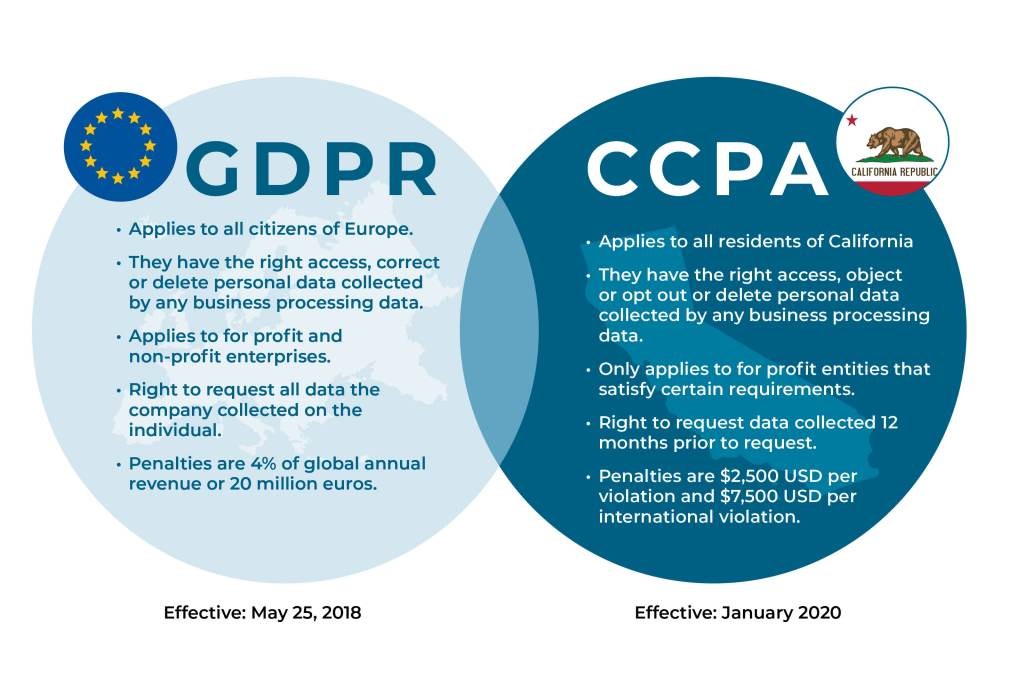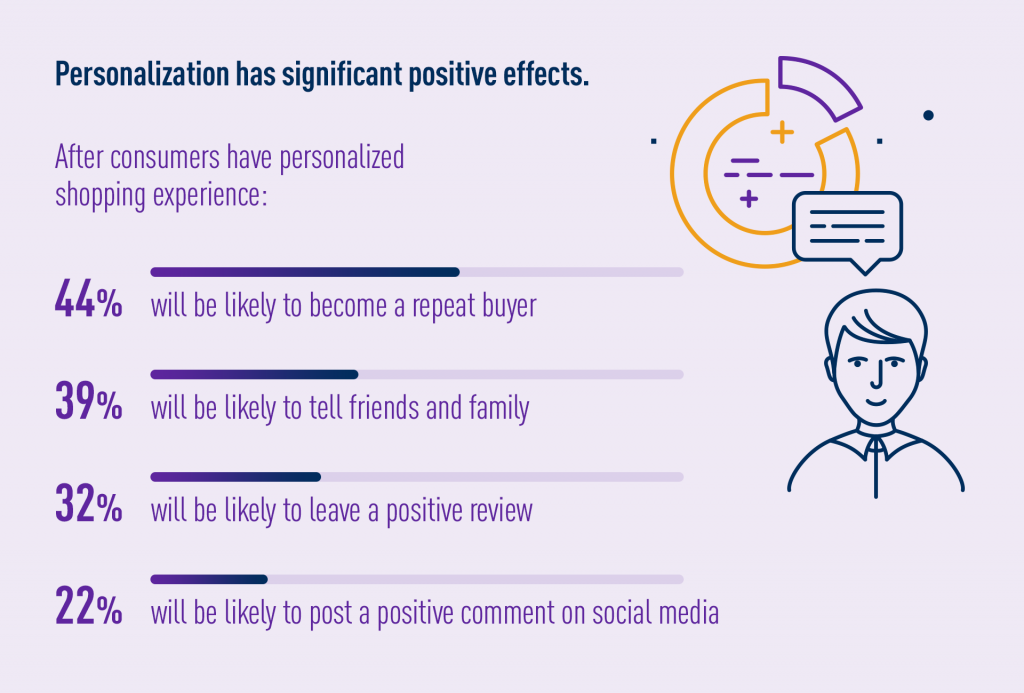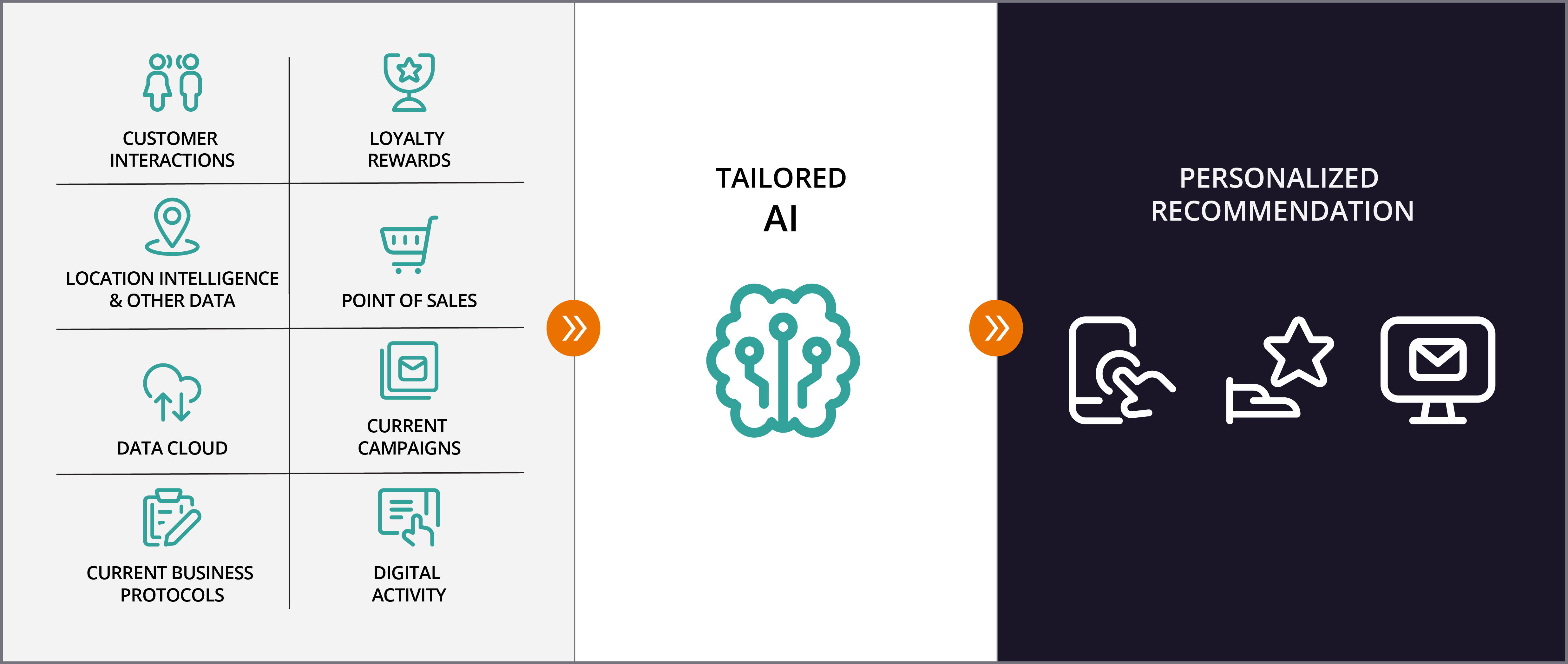You're browsing online for a gift for your spouse. You spend some time researching options, look at a few products, but don't end up making a purchase. The next day, ads for those exact products start following you around the internet. Suddenly, your Facebook feed is full of posts for the earrings you were looking at. Instagram is showcasing the watch you clicked on. Every site you visit seems to know what you were shopping for.
While this level of personalization can sometimes be helpful, it can also feel creepy and invasive. In fact, a 2019 study published in the Journal of Consumer Research found that while moderate personalization in advertising can boost click-thru rates, extreme personalization can backfire - making customers uncomfortable and actually less likely to make a purchase.

The Psychology of Discomfort with Hyper-Personalization
What makes customers resistant to extreme personalization? Psychological research points to a few key factors:
- Loss of Anonymity: When ads know too much about us, it shatters the illusion of anonymity online. We feel exposed and surveilled.
- Reactance: Hyper-targeted ads can make us feel like we're being manipulated, triggering psychological reactance. We bristle at the sense of being controlled.
- Creepiness Factor: There's a fine line between helpful and creepy. When personalization becomes too specific, it ventures into unsettling territory.

A 2018 Accenture study found that 75% of consumers found many forms of marketing personalization creepy, and 40% said it made them only shop at brands they trusted. Customer discomfort is a real risk.

Privacy Concerns and the Changing Regulatory Landscape
Adding to the psychological discomfort, many consumers are increasingly concerned about data privacy and how their personal information is collected and used for personalized advertising.
New regulations like Europe's General Data Protection Regulation (GDPR) and the California Consumer Privacy Act (CCPA) are changing the rules around data collection and usage. Under GDPR, companies must obtain explicit consent to collect and process personal data, and users have the “right to be forgotten.” CCPA gives California residents the right to know what personal data is being collected about them and to opt out of its sale.
Navigating this evolving landscape requires a thoughtful approach to data collection and personalization that prioritizes transparency, consent, and respect for customer privacy.
.png)
Brands Behaving Badly: Lessons from Personalization Missteps
Even major brands have faced backlash for overstepping with personalization. A few cautionary examples:
Target's Pregnancy Prediction: In 2012, Target infamously used a woman's purchase history to infer she was pregnant and send her maternity product ads, upsetting her family who didn't know about the pregnancy. The incident damaged trust and generated negative PR.
Orbitz's Mac vs. PC Pricing: In 2012, Orbitz was found to be showing pricier hotel options to Mac users vs. PC users, based on data suggesting Mac users spend more on travel. Customers were outraged at the different treatment.
Facebook's Discriminatory Ad Targeting: Facebook has repeatedly come under fire for allowing advertisers to target ads in discriminatory ways, such as excluding certain racial groups from housing ads. While not classic personalization, it demonstrates the risks of microtargeting.
The lesson for marketers is that personalization without true customer understanding, transparency and consent is risky business. Tread carefully and think through unintended consequences.
![Filter Bubble, the Dark Sides of Personalization Services | Ewha [Brand Communication]](https://ewhabrandcommunication.files.wordpress.com/2019/11/sampson-filterbubble-1800.jpg)
The Filter Bubble Problem
Another pitfall of hyper-personalization is that it can create “filter bubbles” - where users only see content and products aligned with their past behavior. This limits product discovery and incrementality.
If a customer only sees more of what they already like, it reduces the chances of them finding something new that they didn't know they would like. It's the serendipity of discovering a great new product that can drive incremental sales.
One study found that website recommendations based on customer demographic profiles, rather than on past browsing behavior, led to higher incremental revenue. Bursting filter bubbles introduces productive unpredictability.

Doing Personalization Right
So, is the answer to abandon personalization entirely? No. When done well, personalization can greatly improve the customer experience and drive conversions and loyalty. The key is to do it in a way that doesn't overstep boundaries.
| Metric | Formula | What It Measures |
|---|---|---|
| Conversion Lift | (Personalized Conversion Rate - Default Conversion Rate) / Default Conversion Rate | The incremental impact of personalization on conversion rates |
| Engagement Rate | Interactions with Personalized Content / Total Personalized Content Views | How engaging the personalized experiences are |
| Average Order Value | Total Revenue from Personalized Orders / Number of Personalized Orders | The impact of personalization on order size or value |
| Customer Lifetime Value | Average Revenue per User × Average Customer Lifespan | The long-term value of customers acquired or retained through personalization |
Some emerging best practices:
- Aggregate data intelligently. Instead of hyper-targeting based on individual behavior, aggregate data to spot larger trends and segments with convergent interests. Make recommendations based on these larger patterns.
- Be transparent about data collection. Provide clear notice about what data you're collecting and how it will be used. Give customers control over their data and make it easy to opt out.
- Use progressive disclosure. Don't get too personal too fast. Allow personalization to deepen gradually as you build trust over repeat interactions. Think of it as a second or third date vs. a first date.
- Set reasonable limits. Cap the number of times you retarget a user or remarket based on a specific behavior. Don't endlessly haunt them with the same products.
- Diversify recommendations. Mix in some unexpected discovery with the personalized greatest hits. Introduce a new brand, category, or style to expand their consideration set productively.

The AI Elephant in the Room
No discussion of marketing personalization in 2024 would be complete without addressing the disruptive force that is artificial intelligence. The rapid advancements in large language models, computer vision, and data analysis are already transforming the potential and pitfalls of personalization.

On one hand, AI enables personalization at an unprecedented scale and speed. It can process vast troves of customer data in real-time to deliver hyper-relevant, in-the-moment experiences. From dynamic web page layouts to personalized product descriptions to unique offers, the customization possibilities are mind-boggling.
At the same time, AI also amplifies many of the risks we've discussed – privacy concerns, algorithmic bias, filter bubbles, etc. An AI system is only as good as the data it's trained on and the objectives it's given. Left unchecked, AI personalization could optimize for short-term clicks and conversions at the expense of long-term brand affinity and customer satisfaction.
The path forward is responsible, human-centered AI that augments without alienating. AI should be the (intelligent) means to the end of delivering customer value, not the end in itself. Marketers will need to become skilled at asking the right questions of AI systems, interpreting the insights with nuance, and applying human judgment to plot the right course.

Finding the “Meaningful Middle”
In the end, the answer lies in finding the “meaningful middle” between broad-based marketing and unchecked 1:1 personalization. It's a segment of one, not a segment of one million or a segment of one person. The Goldilocks zone where there's enough personalization to be relevant and valuable, but not so much that it's invasive and off-putting.
| Maturity Level | Description | Example Tactics |
|---|---|---|
| Basic | Broad segmentation based on demographics or basic behavior | Batch email campaigns segmented by age or gender |
| Intermediate | Dynamic content and recommendations based on individual user behavior | Product recommendations based on browsing or purchase history |
| Advanced | Real-time, omnichannel personalization using machine learning | Dynamically personalized web pages, emails, and offers |
| Cutting-edge | AI-powered, autonomous personalization across the full customer journey | Predictive personalization, conversational AI assistants |
The most effective personalization is grounded in deep customer understanding, an ethos of transparency and respect, and a blend of art and science. Brands that strike this balance will inspire shoppers and significantly outperform those stuck in the personalization trap.
As customer expectations evolve and technology advances, the meaningful middle will continually shift. What feels innovative and delightful today may seem basic or boorish in a few years. And the stakes will only get higher, as true personalization becomes a competitive necessity rather than a nice-to-have.
FAQ
1. What is hyper-personalization in marketing?
Hyper-personalization is the practice of using detailed data about individual customers to create highly targeted, customized marketing experiences. This can include personalized product recommendations, tailored content, and individualized offers.
2. Why can hyper-personalization sometimes backfire?
Hyper-personalization can backfire when it feels too intrusive, creepy, or manipulative to customers. If personalization crosses the line from helpful to invasive, it can erode customer trust and damage brand reputation.
3. What are some key privacy regulations affecting personalization?
Some key privacy regulations include the General Data Protection Regulation (GDPR) in the European Union, the California Consumer Privacy Act (CCPA) in the United States, and the Personal Data Protection Act (PDPA) in Singapore. These regulations set rules for how companies can collect, use, and protect customer data.
4. How can brands strike the right balance with personalization?
To strike the right balance, brands should aim for a “meaningful middle” between broad-based marketing and overly intrusive personalization. This means using aggregate data to create relevant experiences, being transparent about data collection, and giving customers control over their data.
5. What role does AI play in personalization?
AI is transforming personalization by enabling more sophisticated data analysis, real-time decision-making, and dynamic content creation. However, AI also amplifies risks around privacy, bias, and transparency, so it must be used responsibly.
6. How can I measure the effectiveness of personalization efforts?
Key metrics for measuring personalization effectiveness include conversion lift (the incremental impact of personalization on conversion rates), engagement rate (interactions with personalized content), and customer lifetime value (the long-term value of customers acquired or retained through personalization).
7. What are some examples of personalization gone wrong?
Some high-profile examples include Target's pregnancy prediction scandal (where the company's personalization algorithm inadvertently revealed a teen girl's pregnancy to her father), Orbitz's Mac vs. PC pricing controversy, and Facebook's discriminatory ad targeting lawsuits.
8. How can I avoid creating “filter bubbles” with personalization?
To avoid filter bubbles, mix in some serendipitous or diverse recommendations alongside personalized ones. This can help introduce users to new products or categories they might not have considered otherwise.
9. What are some emerging best practices for personalization?
Emerging best practices include using aggregate data for targeting, being transparent about data collection and usage, implementing progressive disclosure (gradually deepening personalization over time), setting frequency caps on retargeting, and diversifying recommendations.
10. How do I get started with implementing personalization strategically?
To get started, first assess your current personalization maturity and identify opportunities for improvement. Then, develop a clear strategy that aligns with your brand values and customer expectations. Start with quick wins and continuously test, measure, and iterate based on results. Remember to always put customer trust and transparency first.



